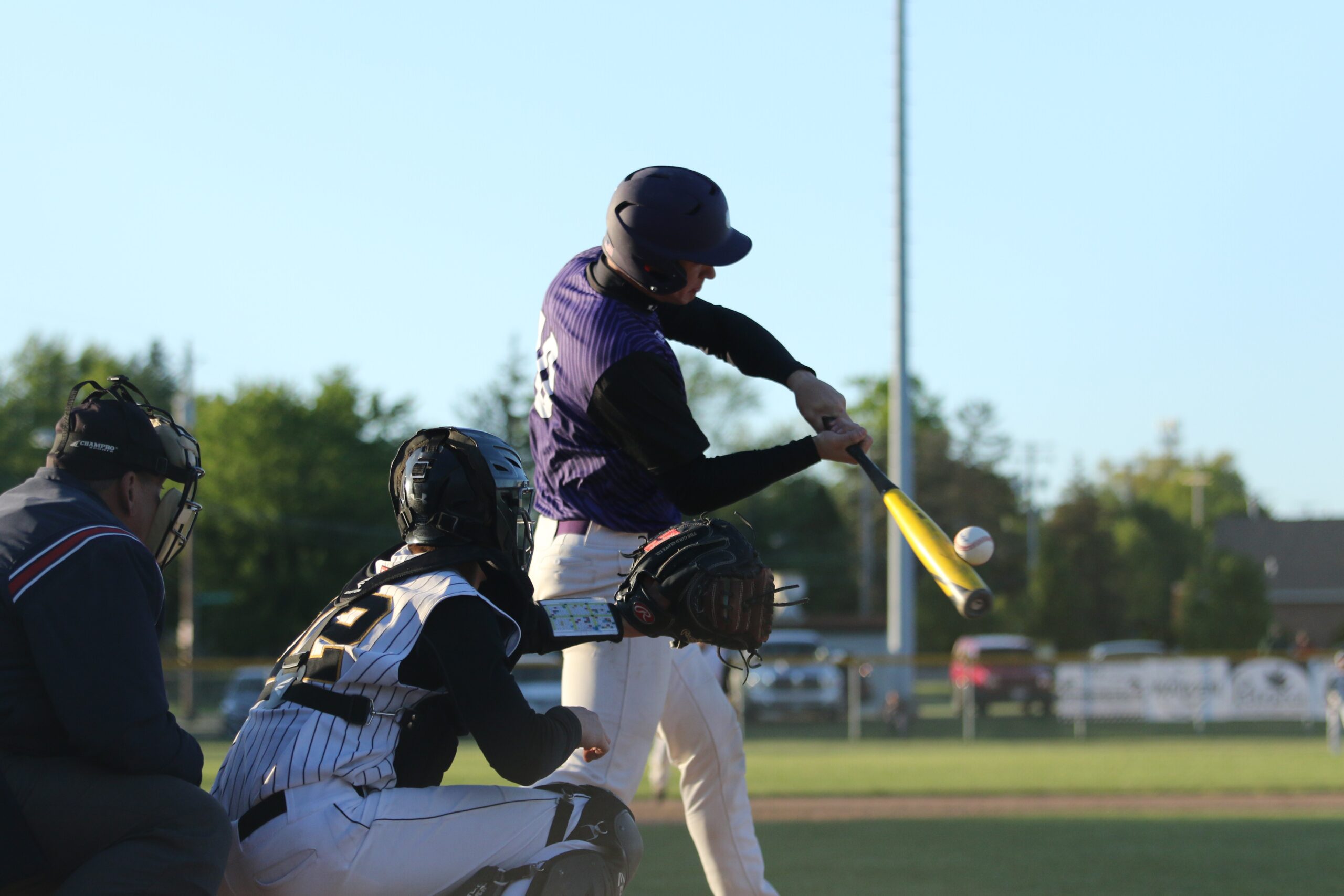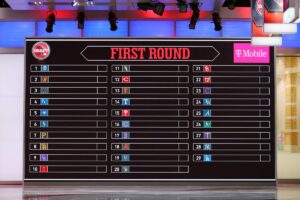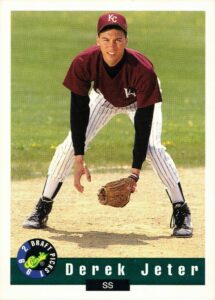For millions of young athletes around the country, the dream of making it to the Major League Baseball (MLB) is a powerful source of motivation. The idea of one day stepping onto that diamond as a professional ballplayer can be both exhilarating and daunting. However, the road to the MLB is lined with countless challenges and obstacles, resulting in a sharply limited number of players who eventually realize their dreams. What are the odds of making the MLB?
The odds of a player advancing from draft pick to a full-fledged major league player can vary significantly based on factors such as position, with pitchers having better chances than position players. Pitchers have a 21 percent chance of making it to the big leagues, while position players sit at a 6.8 percent probability. Moreover, Bleacher Report estimates that around 66 percent of first-round draft picks will eventually compete at the MLB level, signifying the steep drop-off in probability for undrafted players.
Despite these seemingly slim odds, it is important to remember that the dedication, persistence, and sheer willpower of determined athletes can make all the difference. While many talented individuals may never reach the highest level of professional baseball, there are still countless inspiring stories of players who defy the odds and transform their dreams into reality.
Contents
Odds of Making the MLB
Factors Influencing Odds
There are several factors that can influence a player’s odds of making it to Major League Baseball (MLB). These factors include:
- Position: Signed college position players have a 6-7% higher chance of making it to the MLB compared to signed college pitchers. In 2002, 54.1% (350 out of 647) of position players and 48.1% (390 out of 810) of pitchers played in the major leagues.
- College vs High School: The chances of being drafted into the MLB differ significantly for college and high school players. College players generally have higher odds of being drafted due to their experience and maturity compared to high school players.
- MLB Teams: The odds of being drafted also depend on the individual teams’ needs and strategies. Some teams may prioritize drafting pitchers, while others focus on position players.
- NCAA Performance: Strong performances in the NCAA can increase a player’s chances of being noticed and drafted by an MLB team.
High School vs College Players
Both high school and college baseball players can be drafted into the MLB, but their odds of making it to the major leagues differ.
- High School Players: Although high school players have the potential to be drafted, their odds are generally lower compared to college players. They have limited experience and may not have fully developed their skills.
- College Players: College players have higher odds of being drafted due to their experience, maturity, and proven performance in the NCAA. These players have faced tougher competition and may be more prepared for the challenges of professional baseball.
In conclusion, various factors can influence a player’s odds of making it to the MLB, including their position, experience, performance, and the team’s needs. College players generally have better odds of being drafted and making it to the major leagues compared to high school players. However, regardless of the odds, dedicated players can always work hard to increase their chances of achieving success in professional baseball.
The MLB Draft
Draft Rounds
The MLB draft, also known as the amateur draft or the first-year player draft, is a significant event in determining young talent for Major League Baseball teams. The draft currently consists of 20 rounds with hundreds of players being selected. Teams select eligible players from high schools, colleges, and other amateur baseball clubs. The order of the draft is decided by the reverse standings of the previous season.
Major league teams highly value first-round picks, as the odds of those players making it to the MLB are much higher. According to a study by FiveThirtyEight, the odds of first-round draft picks reaching the major leagues are about 9.6%. In contrast, the odds are significantly lower for players selected in later rounds or not drafted at all.
Notable Draft Picks
Here are a few examples of notable MLB draft picks from different rounds:
- First-round picks: These players are generally considered to have high potential and a strong probability of making it to the major leagues. Some famous names in this category include Ken Griffey Jr. (Seattle Mariners, 1987) and Derek Jeter (New York Yankees, 1992).
- Braves notable picks: The Atlanta Braves have had some successful draft picks, such as Chipper Jones (1st overall, 1990) and Tom Glavine (2nd round, 1984). Their selections demonstrate the importance of acquiring quality players to build a successful team.
- 21st-round picks: Although success is more challenging to achieve for players drafted in later rounds, some players have defied the odds and made it to the majors. One notable 21st-round pick is Albert Pujols (St. Louis Cardinals, 1999), who went on to have a Hall of Fame-worthy career.
It’s essential for Major League Baseball teams to carefully evaluate talent during the draft. Success depends on the ability to identify potential stars and cultivate their skills to reach the highest level of professional baseball.
Transition from Amateur to Pro
Minor Leagues and Development
Transitioning from being an amateur to a professional baseball player is a significant change, involving new levels of competition, development, and opportunity. One of the most significant changes is moving up to minor league baseball, where players develop their skills and gain experience in professional ballparks.
In minor league baseball, players are typically assigned to different levels based on their skill and experience. These levels range from Rookie ball to Triple-A, with each level being a stepping stone towards reaching the prestigious Major Leagues. Minor league baseball serves as both a training ground and proving ground for aspiring professional players. Young players hone their skills, while more experienced players aim to break into the 40-man roster, which consists of the top players in an organization.
Pitchers and position players face different challenges during this transition. Pitchers have a higher chance of making it to Major League Baseball (MLB), with a 21 percent success rate, compared to just 6.8 percent for position players. This variance stems from the different skill sets and physical demands required by each position.
Farm Systems
Each Major League team operates a network of minor league teams, known as a farm system. These farm systems are crucial for player development, as they enable players to gradually advance through the ranks while receiving guidance and coaching tailored to their needs.
Farm systems often include:
- Rookie-level teams for newly signed players and those with limited pro experience
- Single-A teams for players beginning to establish themselves as prospects
- Double-A teams for more advanced prospects closer to reaching the Major Leagues
- Triple-A teams for those on the verge of being called up to the MLB roster
Throughout their time in a farm system, players have the chance to refine their skills, work with professional coaches, and adapt to the rigors of professional baseball. This system is designed to maximize player potential and increase their chances of making the leap to Major League Baseball.
In conclusion, the transition from amateur to pro baseball is a complex process, with players navigating a challenging and competitive environment. By progressing through minor leagues and farm systems, they have the opportunity to develop as players and increase their chances of achieving their ultimate goal – making it to the MLB.
Here’s our post-Trade Deadline ranking of all 30 MLB farm systems: https://t.co/HBIYpfPeOF pic.twitter.com/uqVwJP06t8
— MLB Pipeline (@MLBPipeline) September 3, 2020
Entering the Major Leagues
Making an Impact
For a drafted player to make it into the major leagues, they must first overcome significant odds. While the chances may vary depending on the player’s position, pitchers generally have a better chance, with the odds of making it to the major leagues being about 21 percent. In contrast, position players face a 6.8 percent chance1. Even among first-round draft picks, only 66 percent end up playing in the major leagues2.
Once a player makes it to the major leagues, they aim to create a lasting impact. Opening day is an exciting milestone in any player’s career, as it represents their hard work and success in reaching the top level of play. The starting pitcher role and the shortstop position are especially critical, as they can significantly impact the outcome of games.
Adjustments and Challenges
Entering the major leagues comes with its own set of adjustments and challenges. Every player, regardless of their position or skill level, must adapt to the higher level of play, increased pressure, and the demands of the league.
New major leaguers need to understand and abide by the collective bargaining agreement, which outlines various rules and regulations that govern the relationships between players, teams, and the league. These rules cover crucial aspects such as salary, contract duration, and free agency eligibility.
Players must also make adjustments off the field. They need to adapt to the increased travel, maintain physical and mental health, and balance personal life with their professional demands.
Challenges faced by different positions
While every player faces challenges in their journey to the majors, specific positions experience unique hurdles. For example, a starting pitcher must face some of the best hitters in the world and constantly adjust their pitching strategy. Meanwhile, a shortstop must adapt to a faster pace, quicker base runners, and more potent line drives.
Here’s a quick summary of some challenges faced by new major leaguers:
- Adapting to a higher level of play
- Handling increased pressure and demands
- Understanding and abiding by the collective bargaining agreement
- Balancing personal life with professional demands
- Specific challenges depending on the position played
MLB Odds and Betting
Season and Postseason Odds
In the world of MLB betting, there are various opportunities for placing wagers throughout the entire season, which typically consists of 162 games per team. The odds encompass both the regular season and the postseason, with the latter including the World Series.
During the regular season, fans can bet on individual game outcomes or specific player achievements, while postseason odds gauge each team’s chances of winning the coveted World Series. In the betting landscape, odds are constantly changing as the season progresses and teams perform differently.
Postseason odds can be influenced by a team’s performance in the regular season, injuries to key players, and team dynamics. Some popular types of bets include money lines, over/under totals, run lines, and prop bets.
For example, you may find World Series odds on popular betting platforms like DraftKings and FanDuel:
| Team | Odds |
|---|---|
| Houston Astros | +500 |
| Los Angeles Dodgers | +600 |
| New York Yankees | +700 |
Keep in mind that these odds will vary throughout the season, and it’s crucial to stay updated on any changes.
Popular Betting Platforms
Several well-known platforms allow fans to engage in MLB betting, two of the most popular being DraftKings and FanDuel. These online sportsbooks have gained significant traction in recent years, providing users with safe and legal ways to bet on MLB games.
- DraftKings: Known for its daily fantasy sports competitions, DraftKings has expanded into sports betting with a comprehensive selection of MLB odds for both the regular season and postseason, including World Series odds. The platform offers a user-friendly interface, appealing promotions, and the ability to place bets either pre-game or during live games.
- FanDuel: Similar to DraftKings, FanDuel began as a daily fantasy sports platform and transitioned into sports betting as well. They cover a range of MLB betting options, from individual game lines to team and player prop bets, with competitive odds for the regular season and beyond. FanDuel also provides live betting opportunities and promotions to entice new and existing users.
When engaging in MLB betting, remember to always bet responsibly and stay informed about team performances, game odds, and any changes that could affect the outcome of a bet.
Successful MLB Teams
Team Odds Comparison
When comparing the odds of success among the 30 teams in Major League Baseball, a few teams stand out. Historically, franchises like the Yankees and the Dodgers have consistently demonstrated strong performance. However, some relatively newer teams, like the Astros and the Rays, have made notable strides in recent years.
- Yankees: As a dominant force in the MLB, the Yankees are often considered top contenders.
- Dodgers: The Dodgers have a strong history of success and are consistently favored.
- Astros: Despite being a newer team, the Astros have quickly become a force to reckon with in the league.
- Rays: The Rays have made impressive strides in their relatively short time in the MLB.
Recent Standouts
In recent years, a few teams have stood out in their respective leagues due to their exceptional performances.
- New York Mets: The Mets have become one of the top contenders in the National League, with competitive odds.
- Tampa Bay Rays: The Rays’ excellent display during recent seasons has seen them consistently reach the postseason.
- San Francisco Giants: As one of the historic teams in the league, the Giants have had some notable recent success.
The Major League Baseball playoffs highlight the top-performing teams and bring out their competitive edge. As the odds continue to shift throughout the season, it’ll be interesting to see which teams rise to the top, more so among the Yankees, Dodgers, Astros, Mets, Rays, and the San Francisco Giants.



